Since men wear limited jewelry, a watch is a singular expression of their personality. When choosing the correct watch to go with your outfit, you must take into consideration the formality of your dress and the event you are attending. You would not attend a black tie event or a business lunch in trainers, so why wear a watch without enough thoughtfulness?
How do you best make this pairing between your watches and your clothes? Below, you’ll find 6 guidelines for making your watch an elevating, complementary addition to your wardrobe rather than an off-note distraction.
1. Match the Formality of Your Watch With the Formality of Your Outfit. The overarching principle for pairing your watch with your clothes is to have the formality of the former match the formality of the latter.
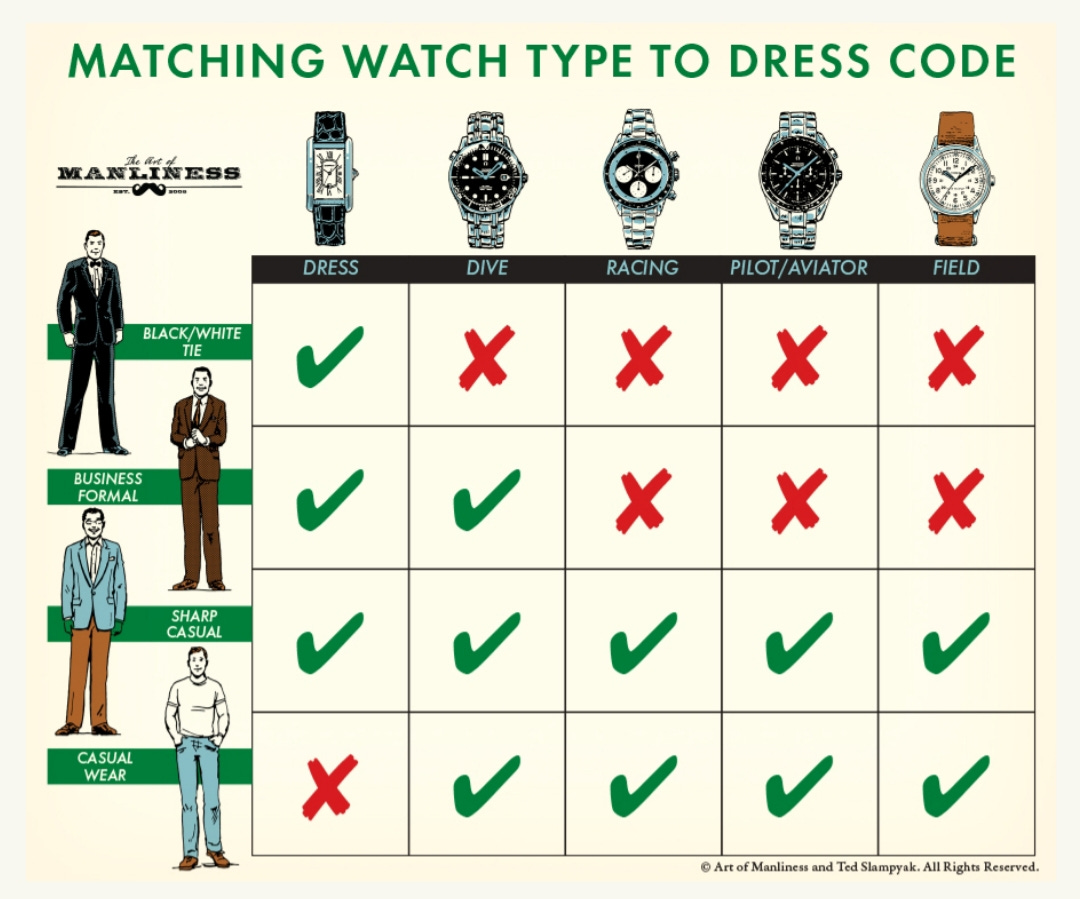
To understand how to do this, you first need to understand the different types of watches that exist.
Watch Types
The two main categories of watches are analog watches and digital watches.
Digital watches have an LCD display or LED face that shows time in numeric form. The straps are typically rubber or plastic. This is your sport or fitness tracker type of watch which pairs with athletic wears. You don’t really need to worry about matching this kind of watch with your clothes; except that you should never wear them with anything dressier than your most causal duds! However, we’ll be concentrating more on analog watches. These have a face with hour and minute hands and either markers or numbers that display a 12-hour cycle. These watches are considered more classic and formal, making them suitable for business and formal events, as well as casual everyday wear.
Within the analog category, there are 5 main types of men’s watches:
Dress – Sleek, simple and sophisticated, the dress watch with a plain white face, no complications (features or extra functions in a watch), and a thin black leather strap is as formal as it gets. A face with hash marks, Roman numerals or no numerals at all adds another touch of elegance.
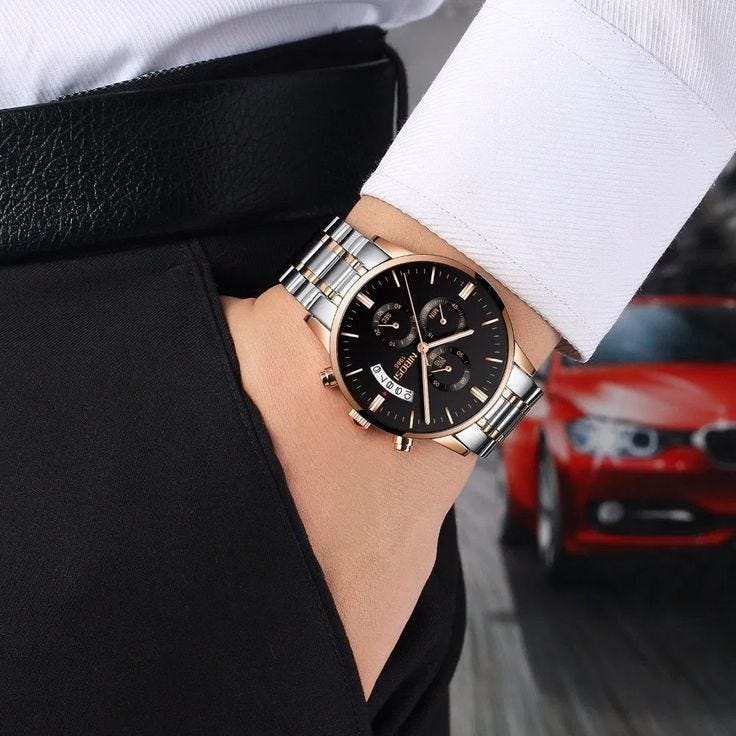
Dive – Originally designed for underwater diving, these watches feature deep water resistance, metal bands, and a medium-sized face with bold, easy-to-read Arabic numerals or hash marks. Typically includes a date-only complication or none at all.
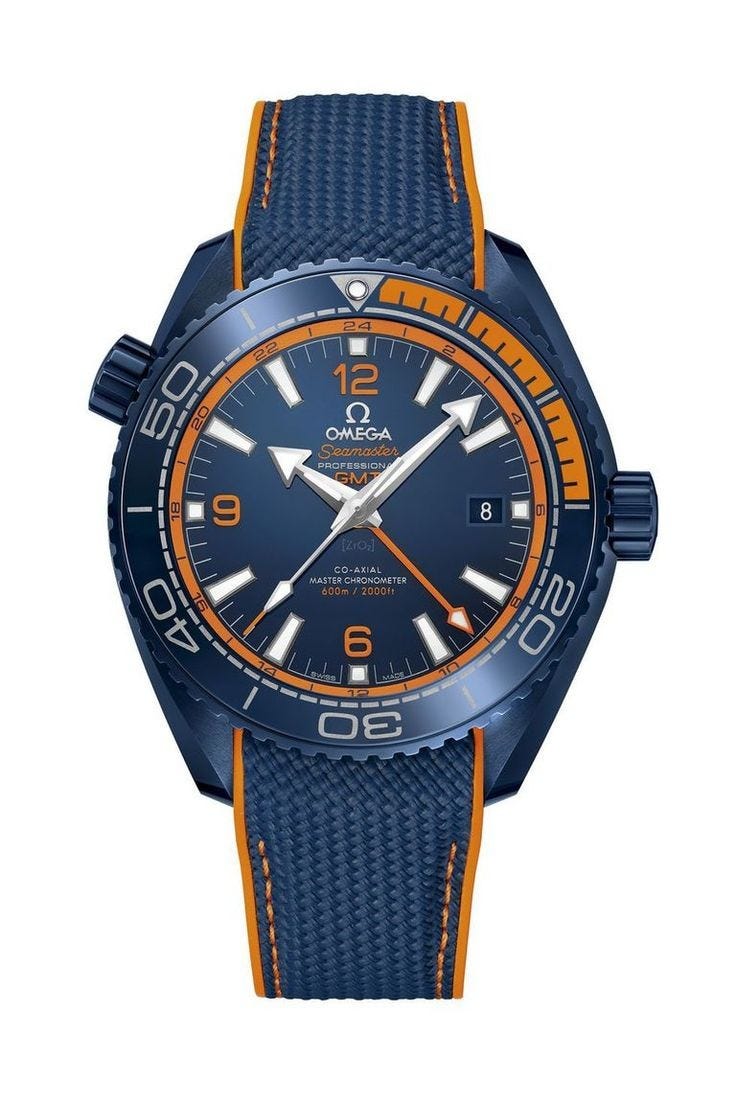
Racing/Driving – Medium to large in size, with a large dial sporting clear Arabic numerals, and often bright, contrasting colors. Always includes a chronograph, and sometimes a date complication as well. The case is stainless steel; the strap is metal or leather.
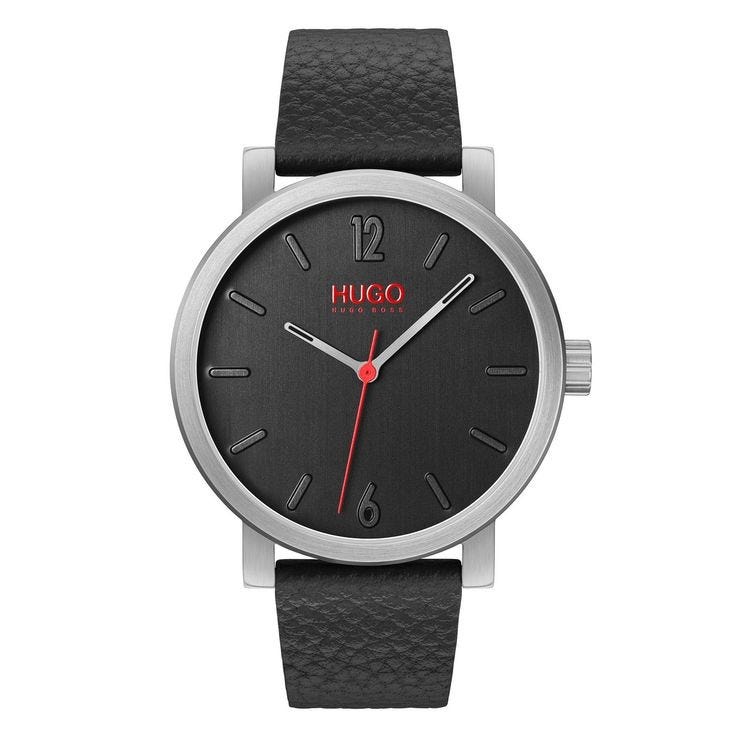
Pilot – Made for the cockpit, the pilot watch is medium to large in size, with an oversized dial, clean, legible numbers, luminous hands, and a date and sometimes a chronograph for the complications. The strap is typically leather.
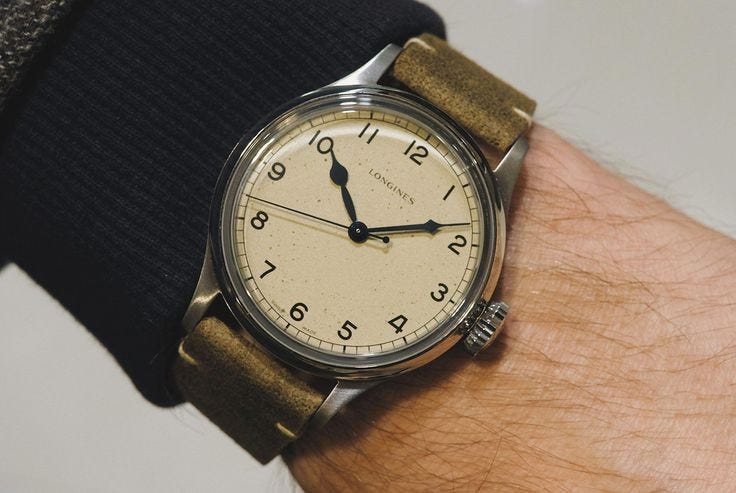
Field – Born from the trenches of WWI, field watches are rugged, functional, versatile timepieces that are tough enough for active duty. Small to medium in size, with a leather or canvas strap, and a face with easy-to-read Arabic numbers. It includes a date-only complication or none at all.
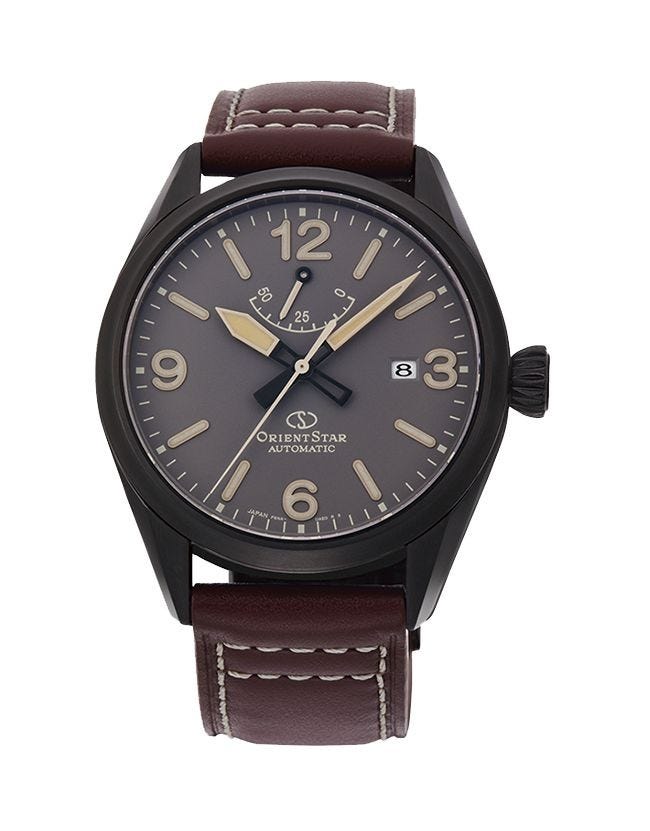
For more details on the different types of men’s watches and how to choose between them,
Matching a Watch Type to a Level of Dress Code Formality
Once you know what the different watch types are, you can learn which goes with the certain kinds of dress codes, and their corresponding outfits.
Here we go:
Black Tie/White Tie – Traditionally, you weren’t supposed to wear a watch to a black tie affair at all, and if you did wear a watch, you weren’t supposed to publicly check it. A formal event is a time out of time, and you should lose yourself in the occasion. That said, a simple, classic dress watch with a small, minimally embellished face and black leather band will be considered appropriate by almost everyone these days.
Business Dress – For the business wear, go with a simple, classic style gold or silver watch with a thin dial and limited or no complications. A dark conservative suit is best paired with a classic dress watch. Some feel a suit should never be paired with a dive watch, but a less formal or conservative suit certainly can be, if you make it one with a leather strap.. Sharp Casual – Here we’re talking button-down shirts, khakis, dark denim, sport coats (no tie), leather shoes, etc. The kind of things you’d wear to a more (but not totally) casual workplace or on a date. Once you’re in this territory, large watch faces and watches with more complications become appropriate, and while these kinds of duds can be paired with every kind of watch mentioned, they’re best complimented by the more casual pilot, racing, or field watch.
Casual – With your most casual clothes — polo shirts, chambray button-downs, jeans, tees — all the watch types except the dress watch will work. If you’re going to be engaging in physical activity, you’ll want something that can take a beating, like the field watch.
2. Match the Formality of the Watch Strap with the Formality of Your Outfit
Once you know the general type of watch that will pair best with the formality of your clothes, you can narrow down things further in terms of the material of the watch strap. There are two guidelines here: Leather watch bands (at least ones that are sleek) are considered more formal than metal bands. Black leather is more formal than brown leather. While gold or silver metal bands aren’t appropriate for the most formal of events, they can be appropriate for dressy occasions when they complement the rest of your outfit. Rough, rugged, worn-in leather straps (such as what you’d see on a field watch) are an exception to the leather-is-formal rule, and should be paired with casual wears, like jeans, rather than a suit.
3. Leather Complements Leather
When wearing a watch with a leather strap, the material and color of your shoes is a suitable reference for the choice of watchband. You should start by matching your belt with your shoes.Then match your watch with both. A black watchband should be worn with black shoes and belt; a brown band with brown belt and shoes.
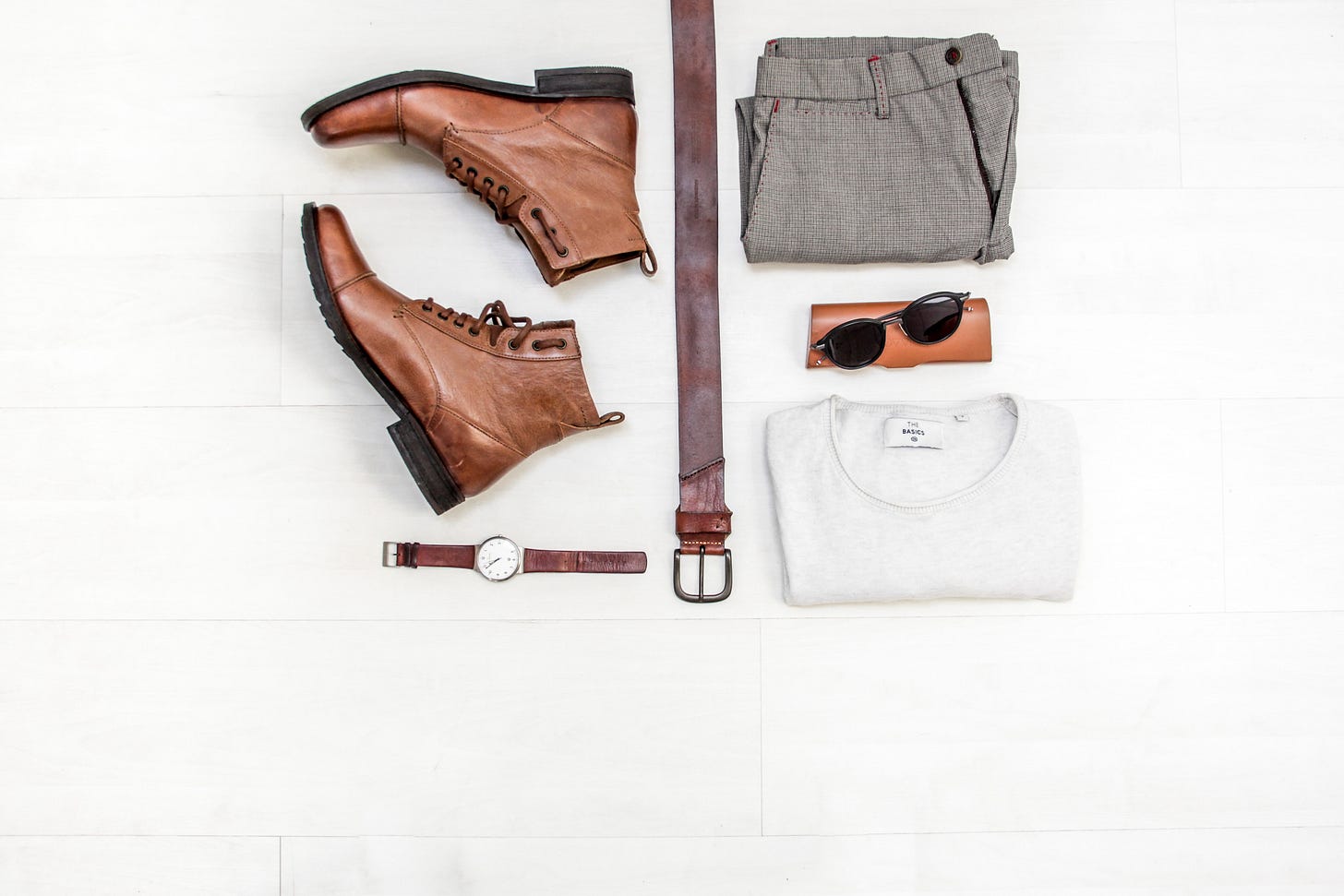
The watchband doesn’t have to be the exact same color as these accessories, but should be a similar tone (light vs medium vs dark).
4. Metal Complements Metal (and Your Clothes/Shoes)
The metals used to make the watch’s case (the frame around the face) and/or its band include steel, gold, silver, platinum, and titanium. The color of the watch’s metal should complement the metal accents of your other accessories — rings (wedding ring excepted), cuff links, shoe buckle, belt buckle, etc. — so that all your accessories are either gold or silver. The colors don’t have to match exactly. For example, a rose gold watch can be worn with a yellow gold belt buckle — it’s close enough.
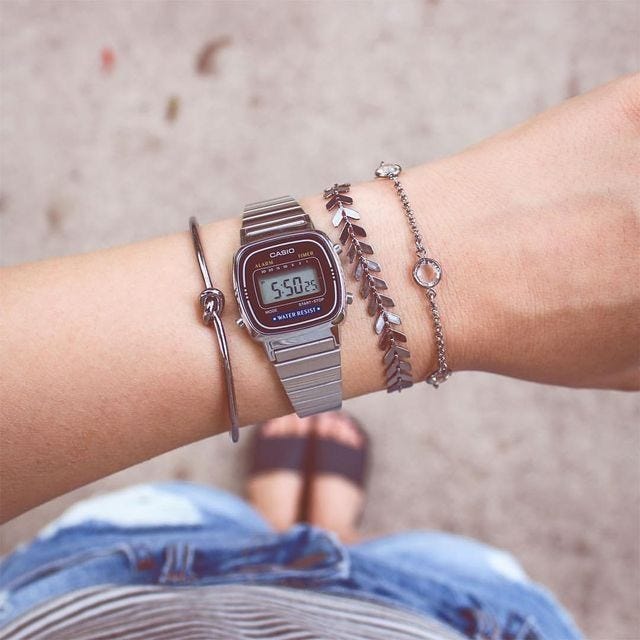
5. Metal Bands Look Better With Certain Colors of Shoes/Clothes
When a watch has a metal strap, it can go fine with either brown or black shoes. But certain colours of metal do go better with certain colours of clothesor shoes. Silver watches match best with clothes and shoes in black, gray, and blue shades. Gold watches go best with browns, beiges, tans, and other earth tones.
Reference : https://www.realmenrealstyle.com/
Now you have learnt the rudiments of styling, shall we rock that piece? Not yet a proud owner of a wristwatch? Not to worry,
is here at your service.
PS: Akexa?


